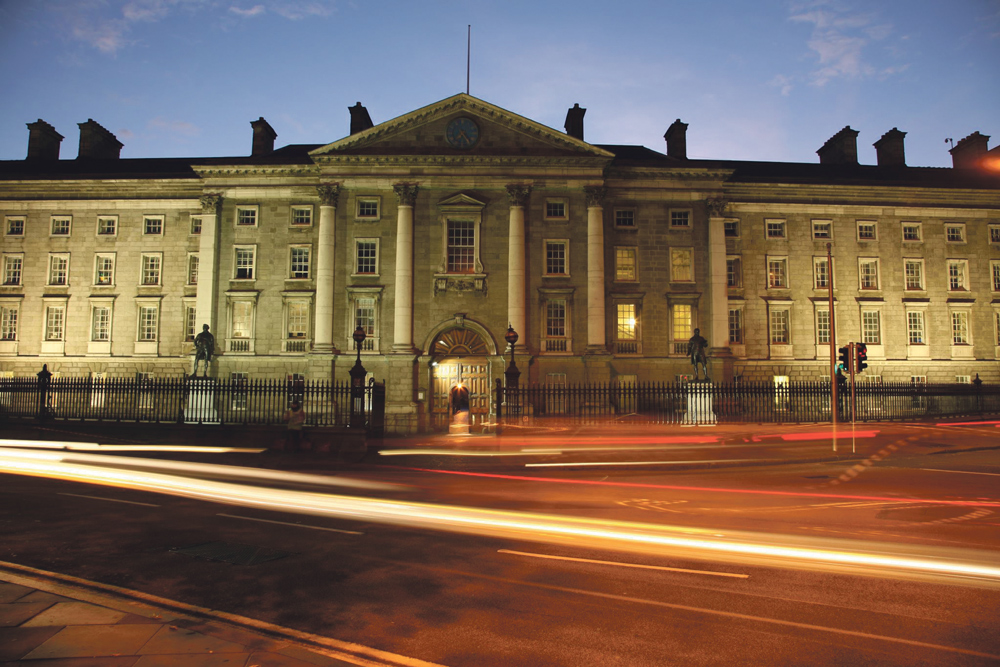Joe Duffy made headlines recently with his outburst about the condition of Dublin City Centre. His depiction painted a damning portrait of a city in decline, in which “The city centre in Dublin is being taken over by pound shops, banks are being turned into fast food gaffs. There are now pound shops, 99-cent shops, 98-cent shops. Dublin city centre is turning into an unadulterated kip and nobody is shouting stop.”
Business owners in Dun Laoghaire were calling into his radio show to complain about the Business Improvement Directive (BID) fees. Callers were already paying fees to Dublin City Council and argued that BID fees were only adding further difficulties. The debate turned to Dublin city centre, described as a template for Dun Laoghaire. This prompted Duffy to give his opinion on the matter: “If you’re using Dublin city centre as a template at the minute, you should go into Dublin city centre as I do on a regular basis. It is dead.”
The city has certainly seen better days.
As a student of Trinity College, and thus someone who is regularly in the city centre, it is difficult to decide whether I agree with Duffy or not. The city has certainly seen better days. The Luas works continue to mar the streets around Trinity and there’s a growing mass of bookmakers, fast food restaurants and tourist shops that drew Duffy’s ire. The closure of Clery’s department store is a final example of what many view as the decline of Dublin’s city centre – one era giving way to the next.
However, a paradox exists here. Amusement arcades, convenience stores and phone shops surround the broad boulevard of O’Connell Street, which is also dotted with impressive landmarks such as the GPO, the Spire and the O’Connell Monument. At one end of O’Connell Street, College Green is flanked by Trinity College and the former Irish Houses of Parliament. At the other end, Parnell Street is lined with Chinese takeaways, snooker halls and e-cigarette shops. The stark contrast between each end enhances the difficulties of deciding whether or not Dublin is really in decline.
A draft scheme proposed by Dublin City Council for O’Connell Street and its surrounding areas seems to endorse the view that these new developments should be stopped. Under the scheme permission will not be granted for certain types of shops, including those that provide fast food and adult entertainment, while aiming to protect sites of architectural and historical significance.
What is lamentable, though, is the loss of the unique contribution these businesses made to Dublin city centre.
However, the rise of discount stores reflect the times and needs of people. They are more popular now because harder times mean people have to avail of whatever offers they can. This can also explain the closure of businesses such as Clery’s department store and Peat’s electronics, due to rising business costs and change in consumer needs. What is lamentable, though, is the loss of the unique contribution these businesses made to Dublin city centre. The conformity of franchise stores like Spar, Centra and Londis detract from the city, and the imagination and unique qualities associated with local businesses are absent.
Dublin city centre is at its worst at night. Drunken revelers roam the streets, and tacky neon lights glow bleakly. In stark contrast, this is when Trinity College is at its best. The cobblestones of Front Square shine under white lamplight, the campanile reaches towards the night sky, and the GMB peers proudly over it all. The strong lines of the Arts Block, so hard on the eyes in the daytime, are much more attractive. The Samuel Beckett theatre logo buzzes like a blue beacon above New Square. And there is nothing better than walking past the cricket pitch and rugby ground, with the lights of Trinity at your back and your shadow gliding ahead of you.
If Dublin city centre is an “unadulterated kip”, then the presence of Trinity College and other historical landmarks can be its saving grace. They can provide a foundation to build upon in the all-important rejuvenation of the city centre. Preserving Dublin’s beautiful aesthetic, and inspiring the creation of unique businesses, will allow Dublin to maintain its unique atmosphere that is so popular with tourists and residents alike. With time and proper planning, Dublin can become the Fair City once more.







